Overview
This article delves into the various types of fans utilized in HVAC systems, underscoring their critical features and applications. Understanding the specific requirements of airflow, static pressure, and environmental conditions is paramount when selecting the appropriate fan type. Each fan type presents unique advantages and challenges that significantly influence overall system efficiency and performance.
The selection process is not merely a technicality; it is a decisive factor in optimizing HVAC operations. By comprehensively assessing airflow needs and static pressure constraints, professionals can make informed choices that enhance system reliability and effectiveness.
In conclusion, it is essential to recognize that the right fan type can lead to substantial improvements in energy efficiency and operational performance. Therefore, a thorough evaluation of the system’s demands is crucial for achieving optimal results.
Introduction
Different fan types play a crucial role in the efficiency and effectiveness of HVAC systems, influencing everything from energy consumption to indoor air quality. As the demand for innovative cooling solutions grows, understanding the diverse applications and key features of these fans becomes essential for engineers and homeowners alike. However, with various options available, determining the best fan type to meet specific heating and cooling needs can be challenging. This article delves into ten distinct fan types, exploring their functionalities, advantages, and applications to help navigate the complexities of HVAC fan selection.
Gagner-Toomey Associates: Innovative Cooling Solutions for HVAC Systems
Gagner-Toomey Associates is at the forefront of innovative temperature regulation solutions tailored specifically for climate control applications. By representing a diverse range of manufacturers, the company emphasizes different fan types that significantly enhance performance and energy efficiency. These advancements are crucial for enabling engineers to maintain optimal temperatures and air quality across various settings, ensuring that heating and cooling systems not only operate efficiently but also align with sustainability goals.
As the heating and cooling market evolves, the integration of different fan types through Gagner-Toomey Associates’ cutting-edge fan technologies is increasingly vital, propelling trends towards smarter, more efficient cooling solutions that address the demands of contemporary applications. According to the U.S. Department of Energy, upgrading to energy-efficient heating and cooling units can reduce energy consumption by 20% to 50%, underscoring the significance of these advancements. Furthermore, residential heating and cooling units account for approximately 40% of the total market, highlighting the growing necessity for innovative solutions in this domain.
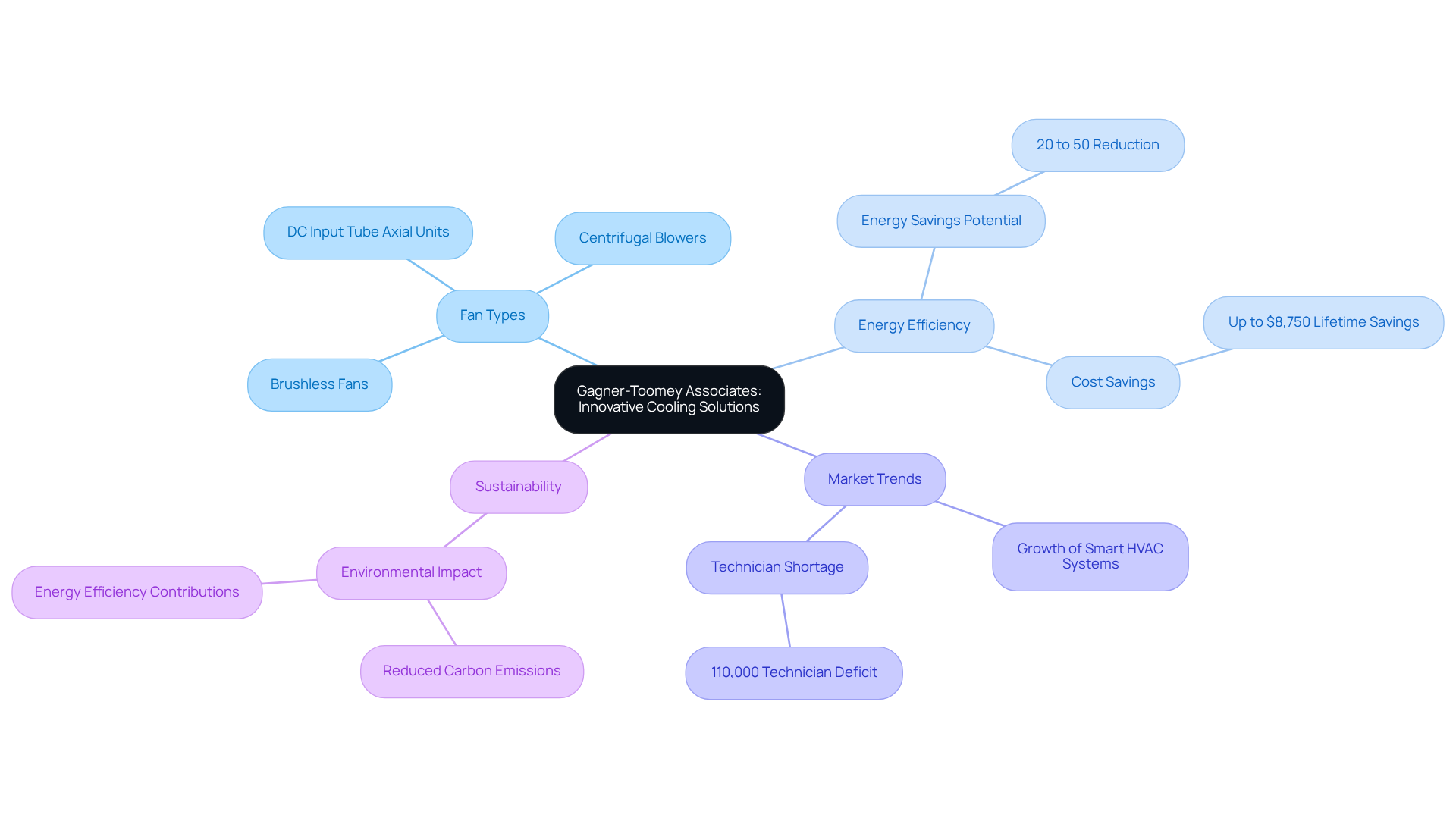
Axial Fans: Design Features and Applications in HVAC
Axial fans are distinguished by their blade design, enabling air to flow parallel to the fan’s axis. Different fan types are extensively utilized in heating and cooling systems due to their capacity to effectively transport substantial amounts of air. Different fan types are commonly used in applications such as:
- Cooling towers
- Air conditioning units
- Ventilation equipment
Looking ahead to 2025, axial blowers are projected to retain a significant market share in heating and cooling systems, driven by their efficiency in managing temperature and enhancing indoor air quality. Their compact design and straightforward installation render them a favored choice for both residential and commercial heating and cooling solutions.
HVAC engineers frequently underscore the benefits of different fan types, particularly axial devices, highlighting their high efficiency in generating significant airflow at low pressures. This characteristic is crucial for maintaining optimal conditions in cooling towers and air conditioning units. Real-world applications illustrate their versatility, as these fans are employed across various environments—from expansive commercial buildings to smaller residential units—ensuring effective air circulation and precise temperature control.
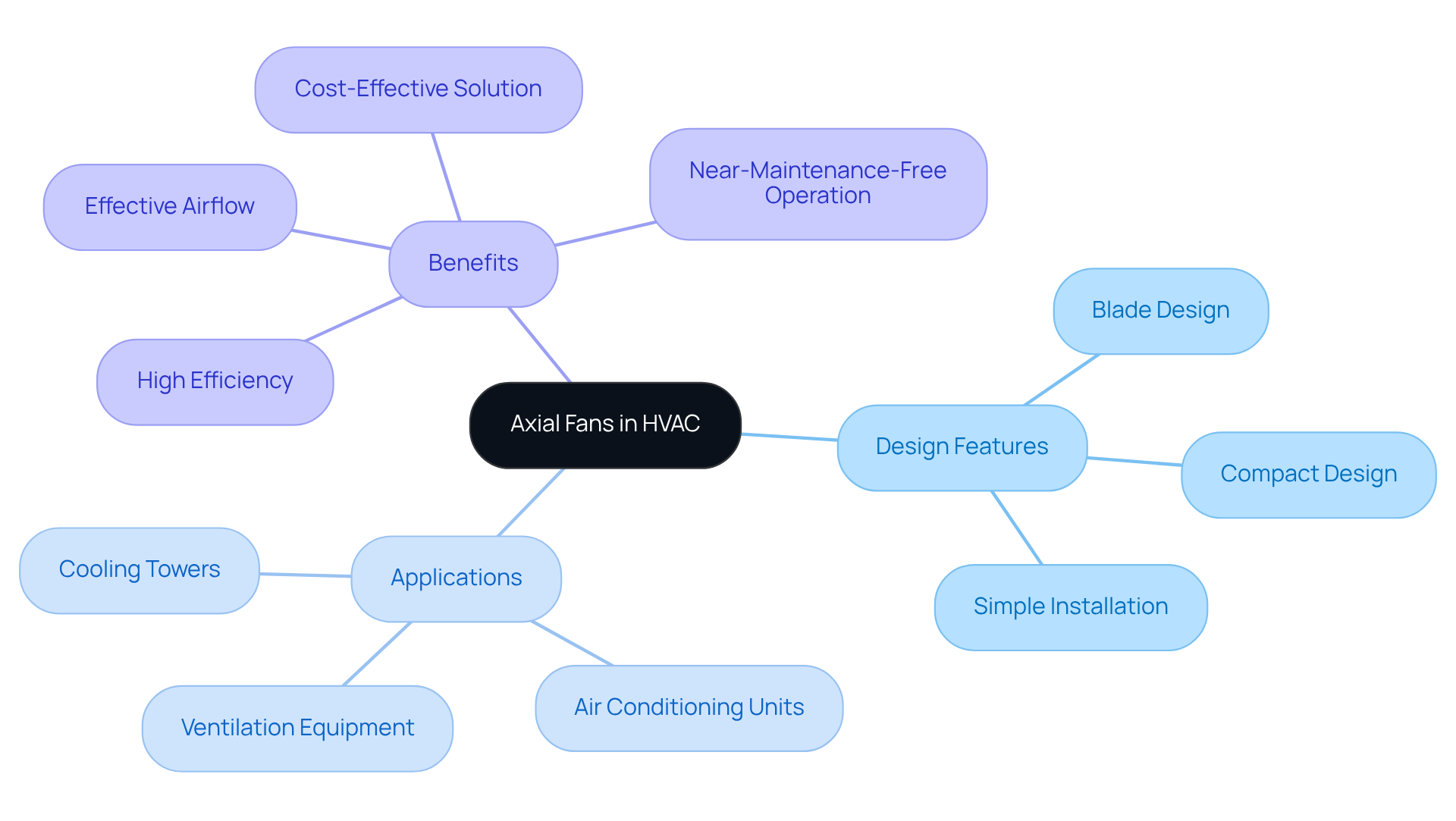
Centrifugal Fans: Mechanism and Advantages for HVAC Efficiency
Centrifugal blowers operate by drawing air into the device and subsequently expelling it at a right angle through a duct. This innovative design facilitates higher pressure and airflow compared to axial fans, making centrifugal blowers particularly suitable for applications that require long duct runs or encounter high resistance.
Commonly found in air handling units, exhaust systems, and industrial ventilation, these blowers excel in maintaining consistent airflow under varying conditions. This capability significantly enhances the efficiency of HVAC systems, making them an invaluable component in modern air management solutions.
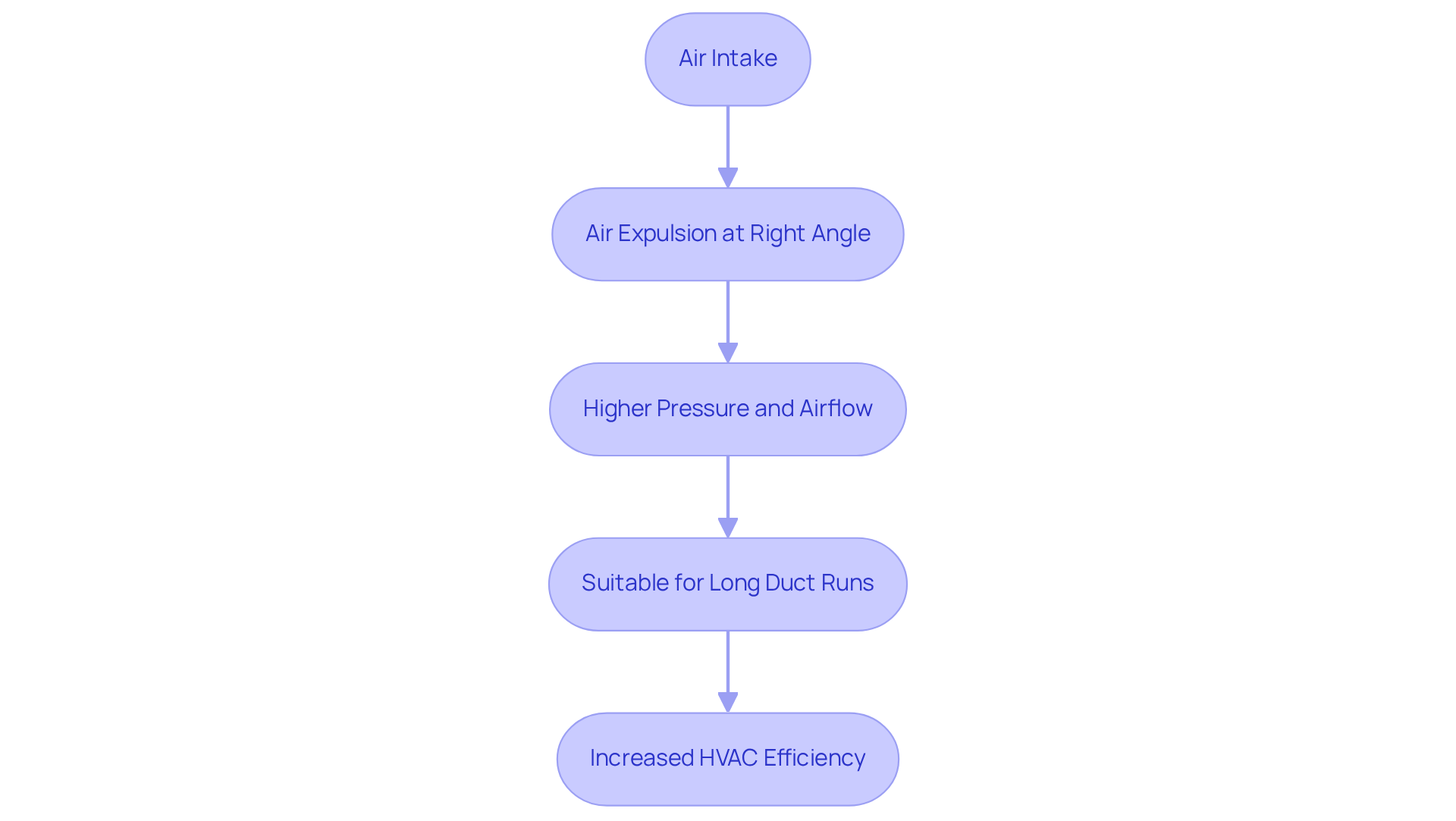
Inline Fans: Functionality and Use Cases in HVAC Systems
Inline blowers are strategically placed within ductwork, optimizing air movement without taking up extra space. Their compact design makes them ideal for settings where conventional air circulators are impractical, such as in tight residential areas. Typical applications encompass:
- Bathroom exhaust systems
- Kitchen ventilation
- Climate control arrangements in enclosed spaces
These devices are engineered to operate silently, significantly reducing noise levels compared to traditional models, thereby enhancing comfort in both home and business environments.
Users frequently report that inline devices can improve airflow by 30 to 50 percent, leading to energy savings of up to 20 percent on monthly electricity bills due to enhanced heating and cooling efficiency. This combination of effective airflow management and low operational noise positions inline units as a preferred solution compared to different fan types for modern HVAC systems. Their versatility also allows for compatibility with different fan types, ensuring optimal performance across various installations.
For optimal outcomes, expert installation is recommended to maximize the advantages of inline devices.
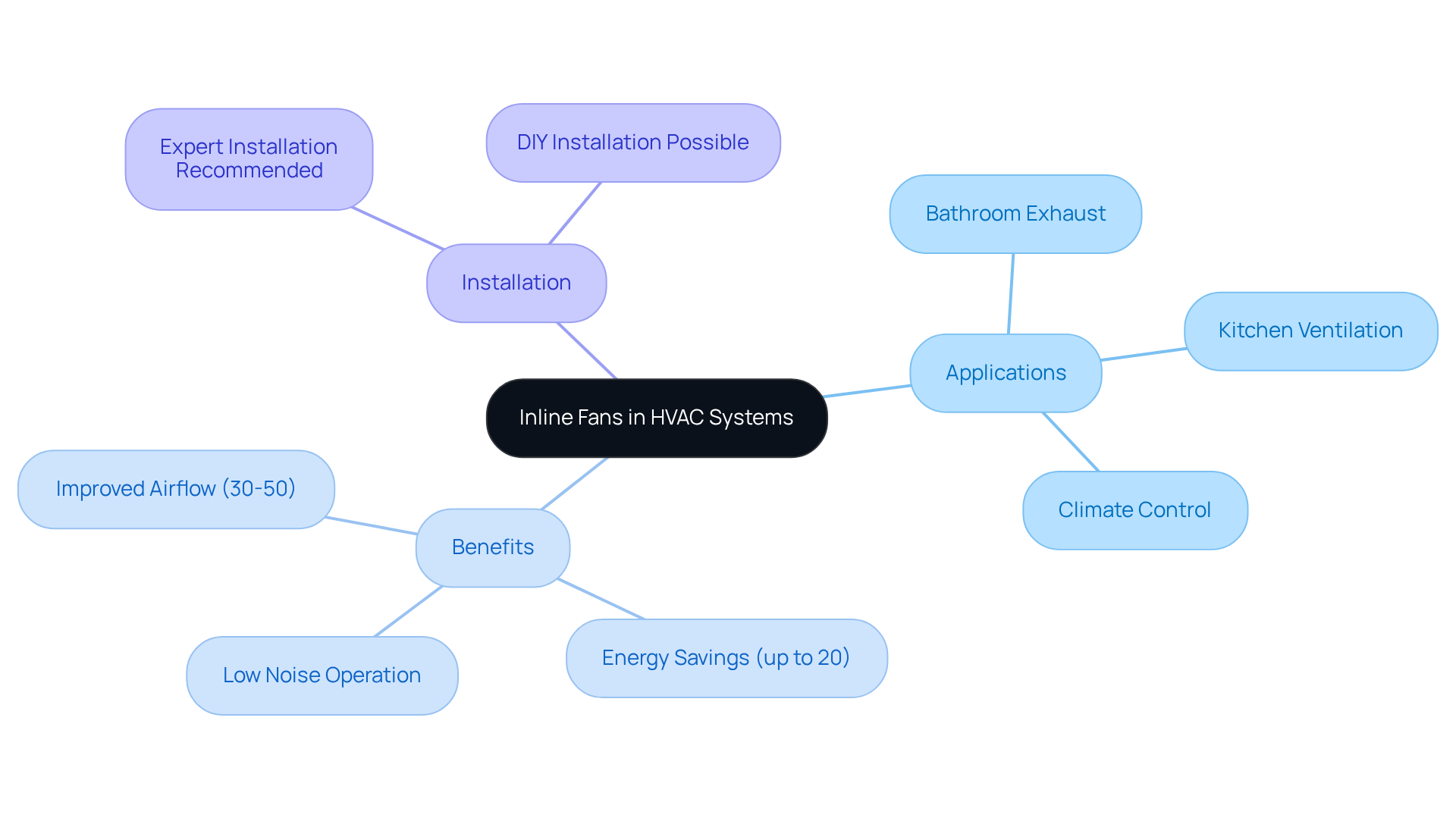
Roof Exhaust Fans: Enhancing Ventilation and Air Quality
Roof exhaust devices are strategically positioned atop structures to effectively eliminate stale air and significantly enhance ventilation. These devices are essential in maintaining optimal indoor air quality, as they proficiently remove heat, humidity, and various contaminants. Commonly found in commercial kitchens, industrial facilities, and warehouses, roof exhaust systems are vital for improving airflow and reducing the accumulation of pollutants. By doing so, they contribute to creating healthier indoor environments, underscoring their importance in both safety and comfort.
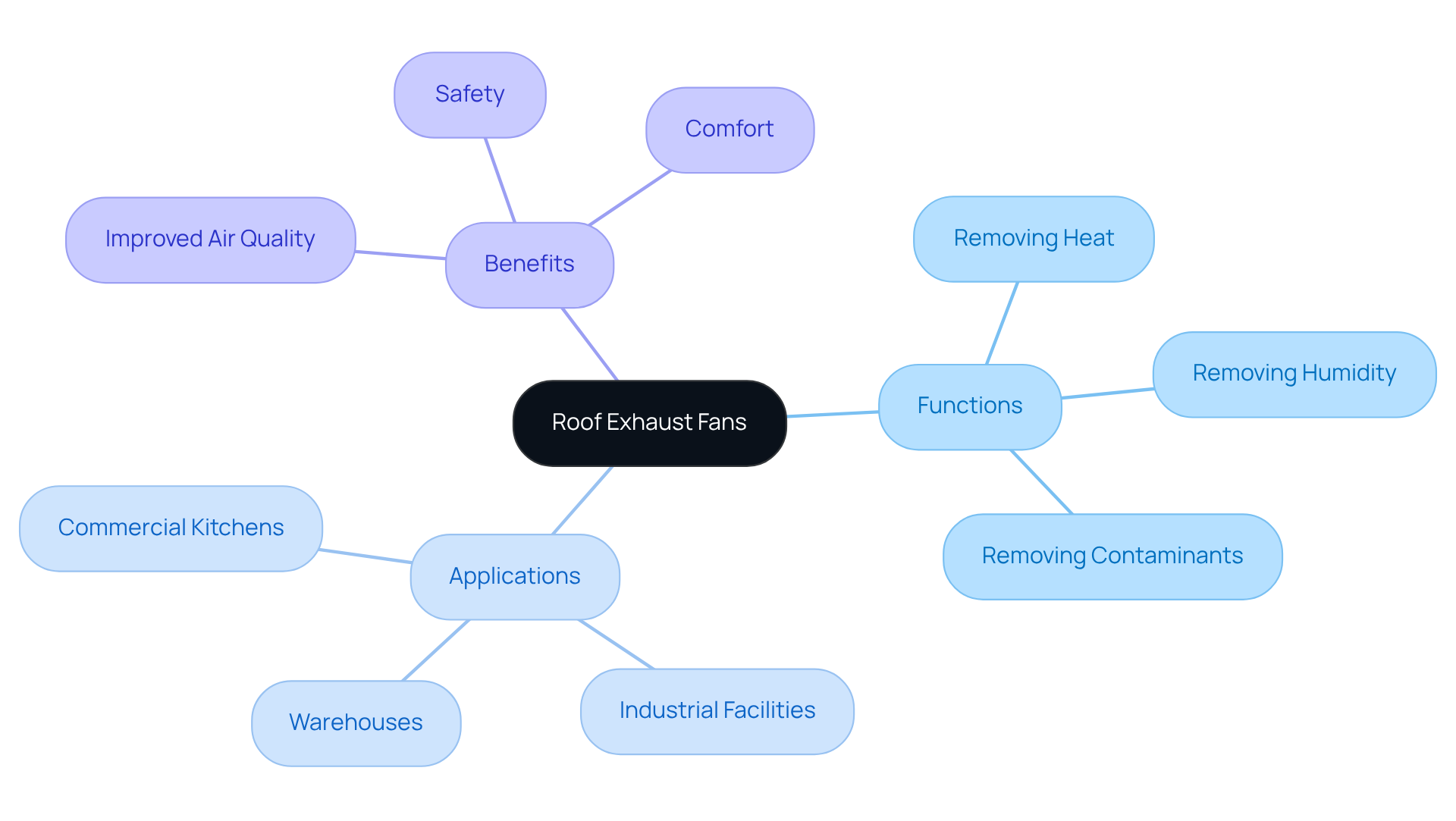
Cooling Solutions for the Energy Sector: Specialized Fan Types
In the energy sector, different fan types are essential for managing heat generated by equipment and processes. High-performance axial and centrifugal blowers are frequently employed in power plants, data centers, and renewable energy facilities. These devices are engineered to withstand harsh conditions and operate efficiently under heavy loads, ensuring optimal performance and reliability in essential applications.
For instance, in data centers, temperature control mechanisms account for approximately 38% to 40% of electricity usage globally in ICT facilities, underscoring the importance of efficient thermal management. Among the different fan types, the axial blowers segment led the market with a revenue share of 38.42% in 2025, preferred for extensive temperature regulation applications due to their high airflow and low power consumption, which are vital for managing high-density computing environments. Furthermore, advanced temperature regulation systems can reduce total energy usage in data centers by up to 30%, highlighting the urgent need for innovative fan technologies.
Moreover, the demand for high-performance fans is anticipated to rise, with the IoT-integrated fans sector projected to grow at a CAGR of approximately 13.25% during the forecast period. This growth is fueled by the increasing need for real-time monitoring and predictive maintenance in temperature control systems, enhancing operational efficiency and minimizing downtime. As the energy landscape evolves, the integration of advanced fan technologies will be essential in meeting the temperature control requirements of modern power plants and data centers.
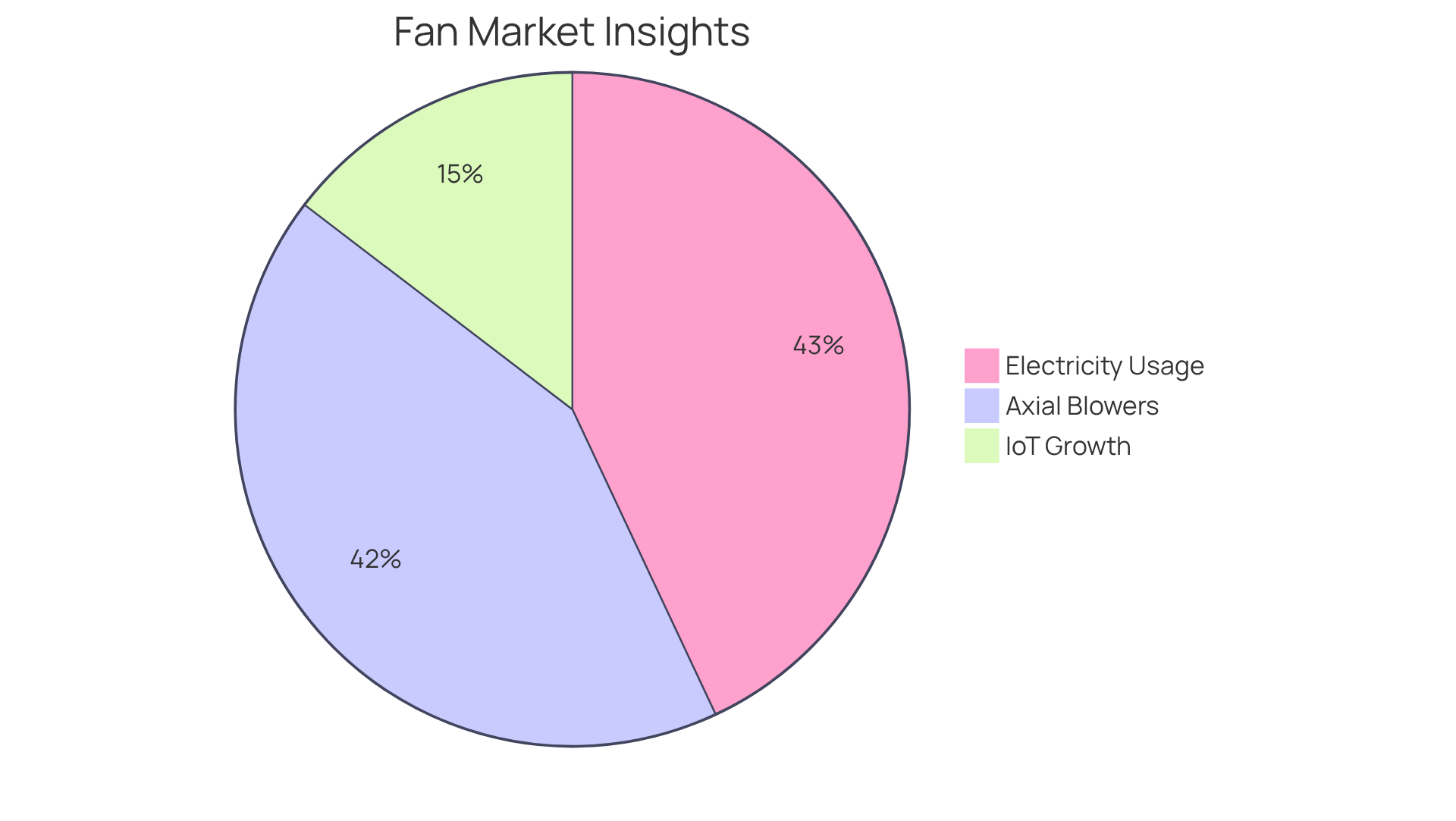
Telecommunications Fans: Ensuring Equipment Performance
Telecommunications fans play a crucial role in cooling sensitive electronic equipment, such as servers and networking devices, by maintaining optimal operating temperatures. This function is essential for preventing overheating and ensuring reliable performance. Their applications extend across data centers, telecom cabinets, and communication towers, where efficient airflow is vital for safeguarding critical infrastructure.
For instance, temperature regulation mechanisms account for approximately 30-55% of total energy consumption in telecom stations and data centers, underscoring the necessity for effective temperature management solutions. In modern data centers, the integration of advanced temperature regulation technologies has been shown to significantly enhance energy efficiency, with liquid temperature management systems reducing facility power requirements by as much as 18%.
Moreover, telecom engineers assert that “Effective cooling systems are crucial to prevent equipment failures, data loss, and service interruptions.” As the demand for data processing and storage continues to escalate, the role of these devices becomes increasingly vital in meeting performance metrics that support the expanding infrastructure needs of the telecommunications sector.
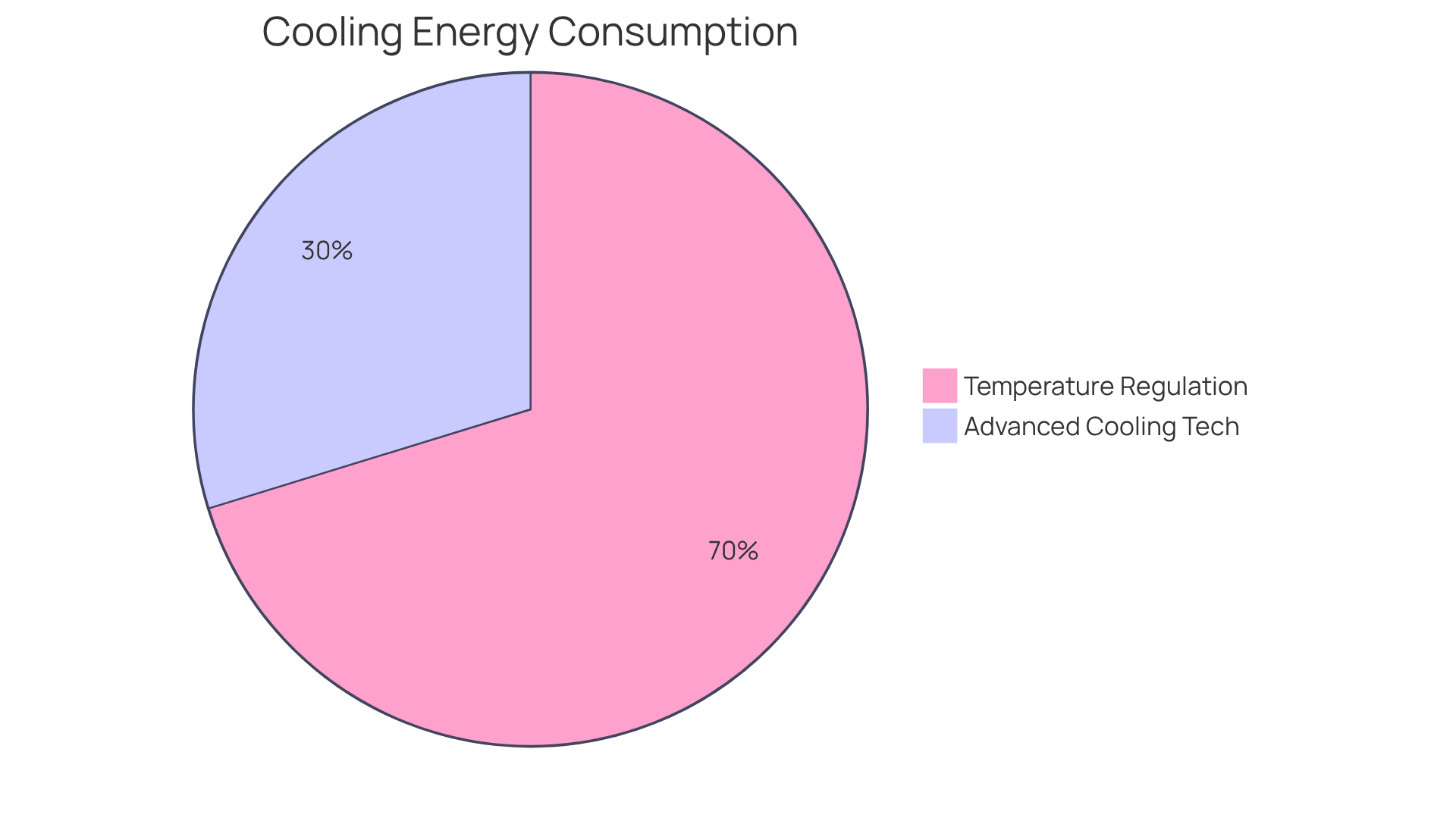
Cooling Fans in Thermal Management: Preventing Overheating
Cooling devices are indispensable for effective thermal management, efficiently dissipating heat generated by electronic components across various applications, including computers, industrial machinery, and consumer electronics. By maintaining optimal operating temperatures, these fans are crucial in preventing overheating, which can result in system failures and significantly diminish the lifespan of components. As Sam Pelonis emphasizes, overheating can lead to diminished performance, premature wear of components, and even safety hazards, underscoring the necessity for reliable temperature regulation solutions.
Efficient thermal management strategies often incorporate different fan types to ensure optimal temperature regulation, allowing electronic devices to operate safely and effectively. The integration of advanced temperature regulation technologies, such as variable speed controls and value-added customizations from E-JPC, further enhances the efficacy of climate control systems, facilitating tailored solutions that cater to specific thermal dynamics.
As we look ahead to 2025, the impact of ventilation devices on the longevity of electronic components remains a pivotal consideration for engineers. Proper device selection and positioning can prevent overheating and extend the operational life of critical equipment. Moreover, understanding fan performance curves and airflow requirements is essential for selecting the most appropriate thermal management solutions.
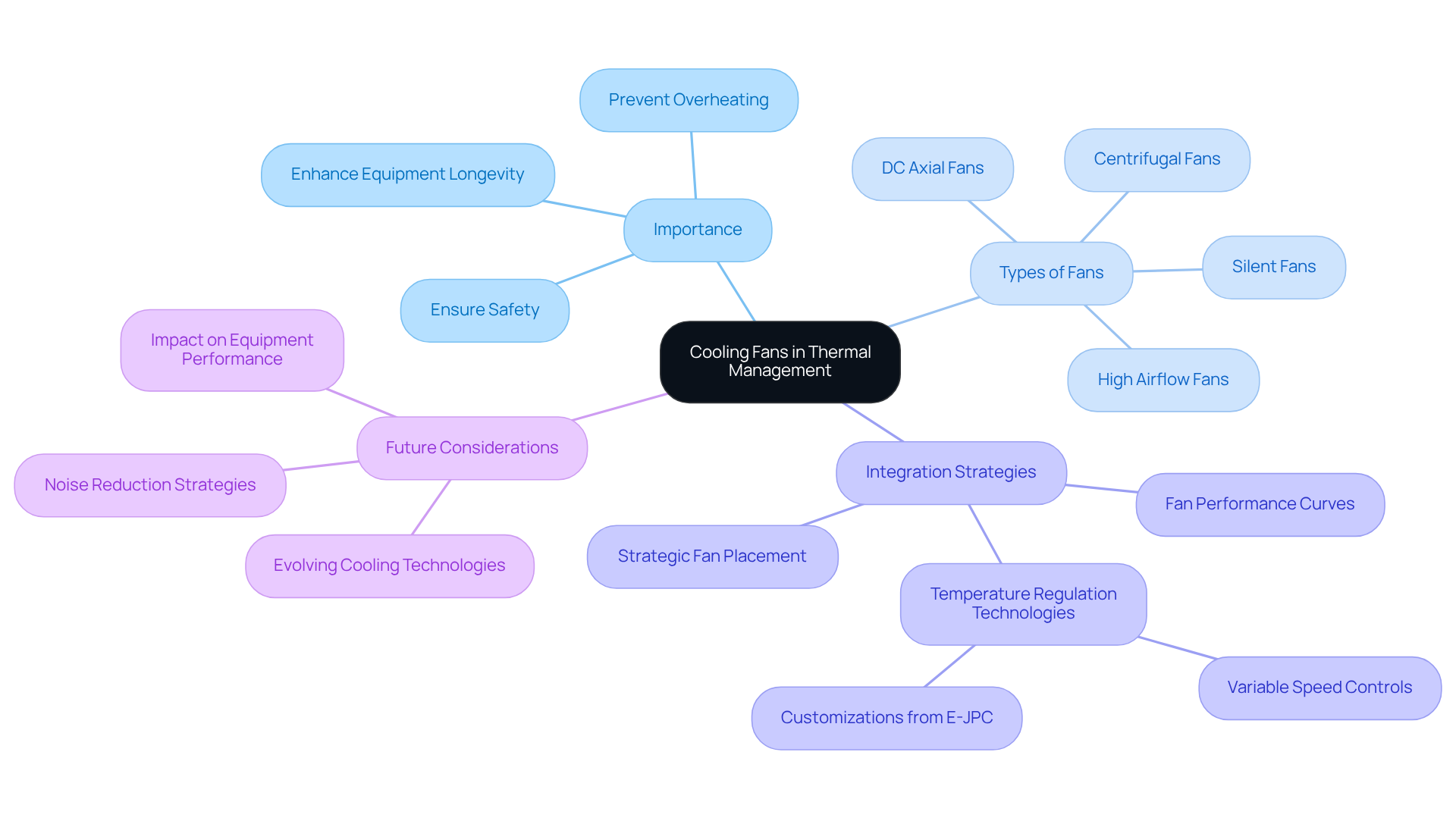
Axial Fans: Pros and Cons for HVAC Applications
Axial blowers are recognized for their high airflow rates, compact design, and straightforward installation, making them a favored choice in heating, ventilation, and air conditioning (HVAC) systems. They excel in applications that necessitate substantial air movement with minimal energy consumption, particularly in environments such as industrial ventilation and electronic cooling. For instance, in HVAC systems, axial blowers effectively circulate air, maintaining comfortable temperatures in both residential and commercial settings.
However, axial blowers encounter significant challenges. Their ability to generate static pressure is limited compared to centrifugal devices, which can hinder performance in high-pressure situations. This limitation becomes particularly apparent in scenarios that demand precise airflow control or uniform air distribution. Additionally, axial blowers often produce higher noise levels, especially at elevated speeds, which can be disruptive in noise-sensitive environments. Research indicates that axial devices can generate noise levels considerably exceeding those of centrifugal units, underscoring the importance of careful consideration of operational conditions.
Engineers in climate control frequently highlight these constraints, noting that while axial blowers are efficient for general cooling, they may not meet the demands of high-heat-density components without supplementary cooling methods. Regular maintenance is also essential to ensure optimal performance, as the accumulation of dirt and dust can lead to imbalances and diminished efficiency. Ultimately, when selecting axial fans for HVAC applications, it is imperative to balance their advantages against these inherent challenges to achieve the desired performance.
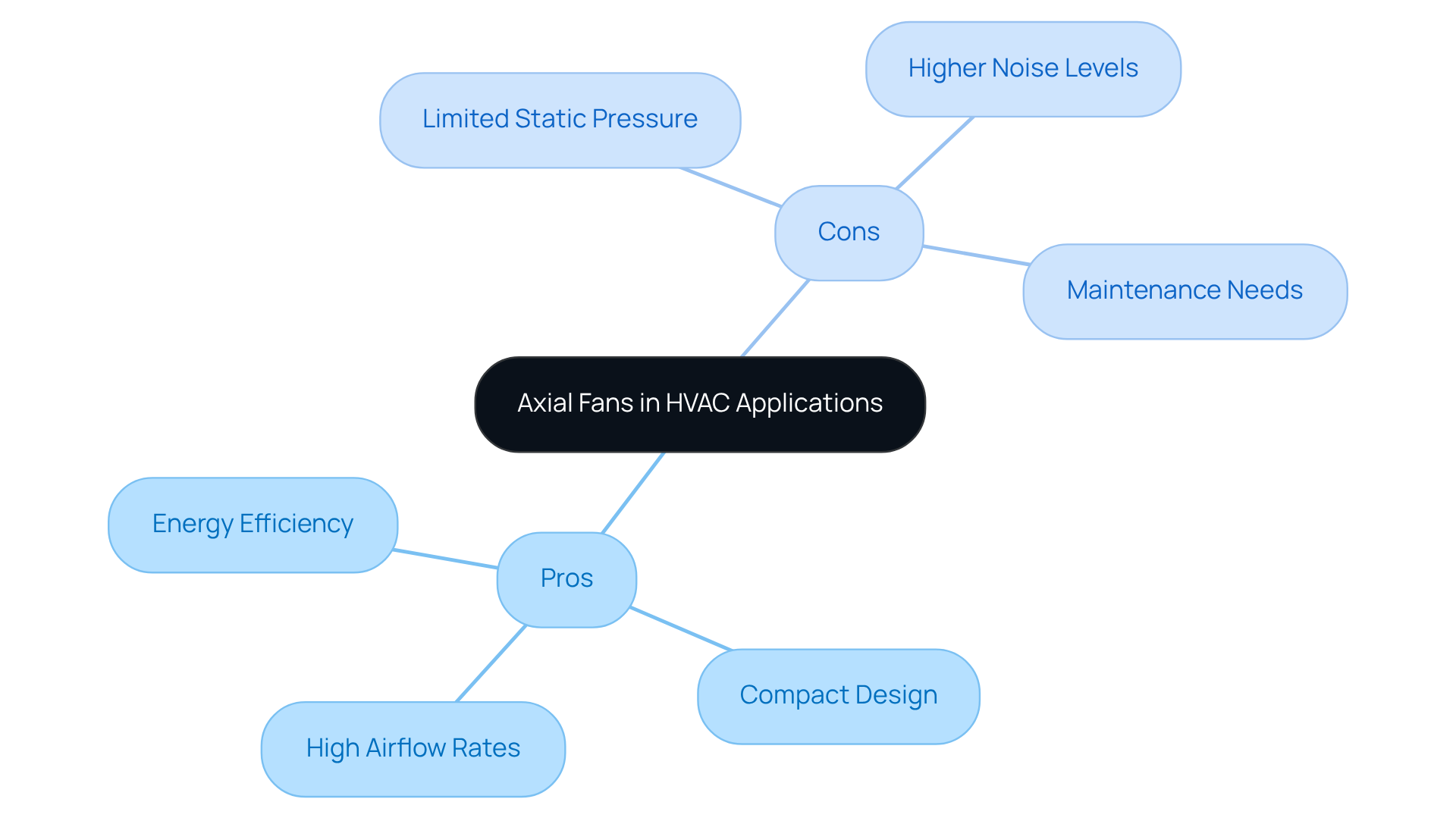
Choosing the Right Fan Types for HVAC: Key Considerations
Selecting the appropriate different fan types for HVAC units involves several critical factors that require attention. The required airflow rate and static pressure are fundamental for ensuring optimal performance. Additionally, noise levels and space constraints significantly influence the decision-making process. Understanding the specific application and environmental conditions is essential for identifying the most suitable different fan types. For instance, the case study ‘Static Pressure Control in Multi-Zone Variable Air Volume Systems’ illustrates that incorrect static pressure settings can lead to inefficiencies and reduced performance.
Consulting with industry experts is imperative; as AMCA states, “the recommended fan operation region for selecting a fan is where the static pressure vs. airflow curve displays an approximately linear and inverse relationship (negative slope).” Furthermore, adhering to the latest guidelines for selecting blowers, such as AMCA Standard 205, which advises a maximum of a 15-percentage-point deviation below peak efficiency, can assist engineers in navigating the complexities of efficiency metrics. This adherence ensures that the selected fans align with current trends in airflow rate requirements for HVAC systems, ultimately enhancing performance and energy efficiency.
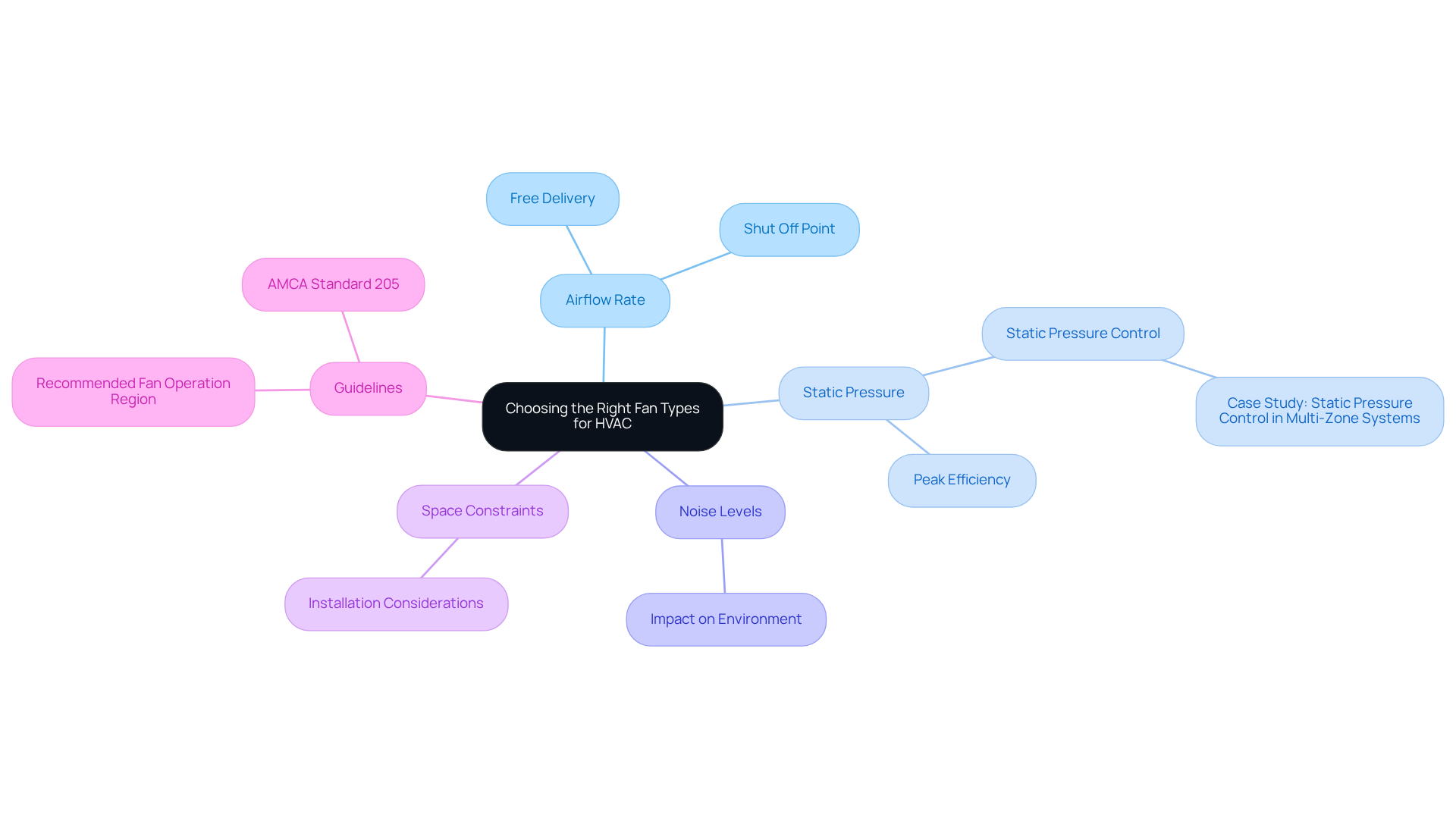
Conclusion
The exploration of different fan types for HVAC systems underscores the essential role these devices play in enhancing energy efficiency and maintaining optimal indoor air quality. Understanding the unique features and applications of various fan types—such as axial, centrifugal, inline, and roof exhaust fans—empowers engineers and facility managers to make informed decisions that align with sustainability goals and operational needs.
Key insights illustrate how:
- Axial fans excel in air circulation for both residential and commercial applications.
- Centrifugal fans are indispensable for high-pressure environments.
- Inline fans provide space-saving solutions with enhanced airflow.
- Roof exhaust fans significantly contribute to indoor air quality by removing stale air.
Each fan type presents distinct advantages and challenges, emphasizing the importance of selecting the right one based on specific requirements.
As the demand for energy-efficient HVAC solutions continues to rise, it is crucial for stakeholders to stay informed about the latest advancements in fan technologies and best practices for selection. By prioritizing the right fan types, organizations can not only improve their energy consumption but also create healthier and more comfortable environments for occupants. Embracing innovative cooling solutions will ultimately drive progress toward sustainable climate control systems that meet the challenges of today and the future.
Frequently Asked Questions
What is Gagner-Toomey Associates known for?
Gagner-Toomey Associates is recognized for its innovative temperature regulation solutions tailored for climate control applications, emphasizing different fan types that enhance performance and energy efficiency in HVAC systems.
How do Gagner-Toomey Associates’ solutions contribute to sustainability?
The advancements offered by Gagner-Toomey Associates enable engineers to maintain optimal temperatures and air quality while ensuring that heating and cooling systems operate efficiently, aligning with sustainability goals.
What impact can upgrading to energy-efficient heating and cooling units have?
According to the U.S. Department of Energy, upgrading to energy-efficient heating and cooling units can reduce energy consumption by 20% to 50%.
What percentage of the total market do residential heating and cooling units account for?
Residential heating and cooling units account for approximately 40% of the total market.
What are axial fans and what are their applications in HVAC?
Axial fans are characterized by their blade design that allows air to flow parallel to the fan’s axis. They are used in applications such as cooling towers, air conditioning units, and ventilation equipment.
What is the projected market share of axial blowers in heating and cooling systems by 2025?
Axial blowers are projected to retain a significant market share in heating and cooling systems by 2025, due to their efficiency in managing temperature and enhancing indoor air quality.
What are the advantages of using axial fans in HVAC systems?
Axial fans are favored for their high efficiency in generating significant airflow at low pressures, which is crucial for maintaining optimal conditions in cooling towers and air conditioning units.
How do centrifugal fans operate and what are their advantages?
Centrifugal fans draw air into the device and expel it at a right angle through a duct, facilitating higher pressure and airflow compared to axial fans. They are particularly suitable for applications requiring long duct runs or high resistance.
Where are centrifugal blowers commonly found and what is their benefit?
Centrifugal blowers are commonly found in air handling units, exhaust systems, and industrial ventilation. They excel in maintaining consistent airflow under varying conditions, significantly enhancing the efficiency of HVAC systems.

